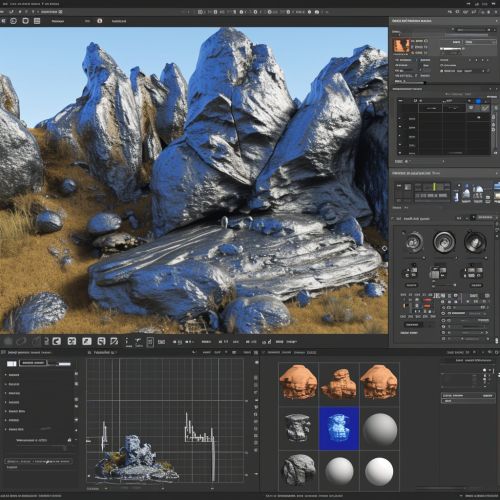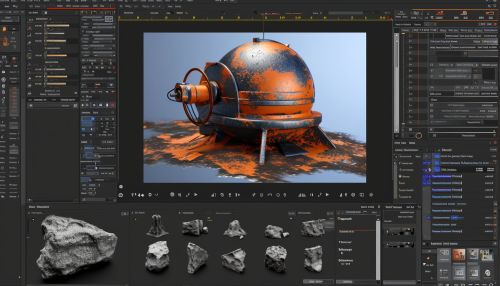Blender (software)
Overview
Blender is a free and open-source 3D computer graphics software toolset used for creating animated films, visual effects, art, 3D printed models, motion graphics, interactive 3D applications, and computer games. Blender's features include 3D modeling, UV unwrapping, texturing, raster graphics editing, rigging and skinning, fluid and smoke simulation, particle simulation, soft body simulation, sculpting, animating, match moving, rendering, motion graphics, video editing, and compositing.


History
Blender was developed as an in-house application by the Dutch animation studio NeoGeo and Not a Number Technologies (NaN). It was initially released as a shareware program in 1998, with version 1.0. The software was later released as free software under the GNU General Public License in 2002, following a crowdfunding campaign to purchase the rights to the source code.
Features
Blender has a wide range of tools and features, which can be extended through the use of Python scripting. These features are grouped into different modes, each of which provides a set of tools for a specific task in the 3D creation process.
3D Modeling
Blender's 3D modeling tools include polygonal modeling, curve modeling, and digital sculpting. Polygonal modeling is the process of creating a 3D object by defining its shape with polygons. Curve modeling uses curves, which are defined by control points, to create 3D objects. Digital sculpting is a more artistic approach, where the user can "sculpt" a 3D model as if it were made of clay.
UV Unwrapping and Texturing
UV unwrapping is the process of projecting a 3D model onto a 2D plane, so that a 2D texture map can be applied to it. Blender's texturing tools allow for both procedural and image-based texturing. Procedural textures are generated by the software and can produce very realistic results, while image-based textures are created from digital images.
Rigging and Skinning
Rigging is the process of adding a skeletal structure to a 3D model, which can then be used to animate the model. Skinning is the process of attaching the model to the rig, so that the movements of the rig affect the model. Blender's rigging and skinning tools allow for complex character animation.
Simulation
Blender includes tools for simulating both hard and soft body dynamics, as well as fluid and smoke simulation. These tools can be used to create realistic animations of physical phenomena.
Rendering
Rendering is the process of generating a 2D image or animation from a 3D scene. Blender includes two rendering engines: Cycles, which is a ray-tracing renderer, and Eevee, which is a real-time renderer.
Extensions and Add-ons
Blender's functionality can be extended through the use of add-ons, which are scripts written in Python. These add-ons can provide additional tools and features, or automate complex tasks.
Community and Resources
Blender has a large and active community of users, who contribute to the development of the software through bug reports, feature requests, and development of add-ons. There are also many resources available online for learning Blender, including tutorials, forums, and documentation.
